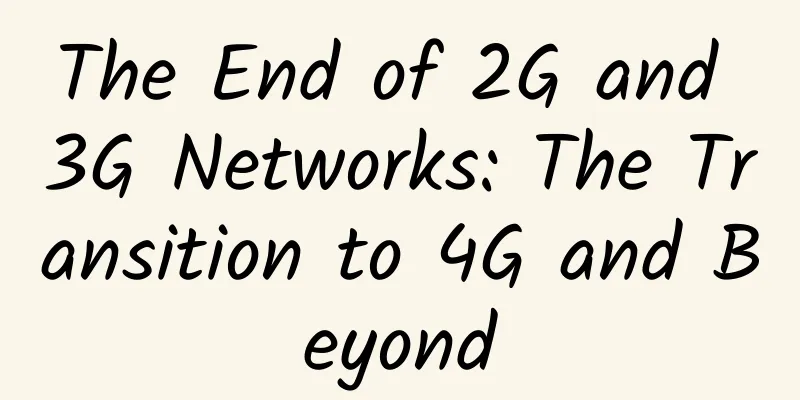The End of 2G and 3G Networks: The Transition to 4G and Beyond

|
As technology evolves and big data becomes more prevalent, applications and devices are demanding more speed and power. For connected devices, speed is everything, and older 2G and 3G networks struggle to deliver fast enough speeds. For this reason, carriers are planning to shut down 2G and 3G networks. Here are things to consider as you transition to 4G and beyond so you can prepare for the future and take advantage of the technology as it becomes more widespread.
2G and 3G turned offMany cellular providers are retiring their 2G and 3G networks in favor of 4G LTE (Long Term Evolution) networks. In fact, some operators have already retired their 2G networks. They did this to open up as much bandwidth as possible to meet the increasing demand for data and higher demands for faster speeds. Most operators announced their transition plans and timelines back in 2019. However, things have changed a bit as the date approaches. Still, each operator has an implementation strategy with a timeline, and most of them are aiming for 2022 or earlier. In the United States, the three main players in cellular service are AT&T, Verizon, and T-Mobile (including Sprint). AT&T and Verizon have already stopped providing service for 2G. Sprint plans to do the same in December 2021, and T-Mobile is expected to shut down its 2G network in December 2022. The currently planned 3G shutdown dates are as follows. AT&T 3G OffService will cease completely in February 2022. In some markets, one of the network's frequency bands (1900 MHz or 850 MHz) may be switched off prior to this date. Customers are advised not to activate SIMs using 3G technology and to begin migrating all 3G devices to 4G LTE or LPWAN as soon as possible. Verizon 3G ShutdownThe 3G CDMA network will be retired no later than December 31, 2022. Planned changes on 3G CDMA and 4G non-VoLTE devices have now ceased, and troubleshooting services for these devices are limited in preparation for the transition. You can contact Verizon to determine if your 3G CDMA or 4G non-VoLTE device is eligible for the upgrade. T-Mobile and Sprint 3G ShutdownCurrently, new activations require VoLTE and LTE capabilities. Devices without VoLTE emergency calling capabilities (V911) will not work on the T-Mobile network. Before activating any new device, complete the Query Device API check to determine device compatibility. If you have any questions, please contact your Operations Manager or Business Development Manager. The Sprint CDMA network is scheduled to shut down on January 1, 2022, and the LTE network is scheduled to shut down on June 30, 2022. During this transition period, capacity and coverage may change in some areas. No renewals or extensions will be granted after June 30, 2022. We will be following this transition closely, and we recommend you do the same. Dates may be different elsewhere in the world, so you can double-check details about the 3G switch-off if you wish. How to prepare for the 3G shutdownNow is the time to start planning your migration before 3G shuts down. Here's what you should do now to prepare:
As you write down the technology and hardware that needs to be replaced, think about the cost and impact of any downtime on your business. Will you need to take equipment and services offline to make the transition? If so, how long do you expect it to take? What is the expected impact from a service and financial perspective? Making this update is not an easy task, and it can have a significant impact on your business. To do this successfully, you need to have a transition plan in place and someone dedicated to overseeing this project. What does the 3G shutdown mean for the Internet of Things?You need to complete the transition to 4G before your carrier shuts down your current 2G or 3G network. As a provider's network is retired, devices connected to that network will no longer work. Manufacturers will no longer support these devices, which can have a significant impact on your business. As carriers work to phase out 3G, some consumers are already seeing drops in coverage, reliability, or capacity. You may have already felt this change, as some carriers are keeping their 3G networks (and 2G, for those that are still available) in low-bandwidth mode as they plan to shut down. It’s also important to note that some older 4G devices previously connected to the network as 3G devices. Contact your device manufacturer to see if this is the case for you, as you may be able to reprogram your device to support 4G only or activate 4G priority mode. Keep in mind, though, that not all devices can do this. While most personal consumer devices, such as smartphones, already run on 4G networks, many other IoT devices still rely on 3G or even 2G. This means that businesses that rely on these older networks have a lot of work to do to plan for upgrades while determining the impact of the transition on their business. Benefits of moving to 4GThere is a bright side to all this, though. Most companies with IoT devices will see significant improvements by upgrading to 4G technology. It is the most widely available network and offers higher quality and better security than 2G and 3G. In addition, 4G offers the following benefits:
It’s a good idea to migrate to 4G ahead of time. While it may be tempting to migrate to 5G, it’s best not to do so. You’ll find the benefits of moving to 4G very attractive, while the timeline for 5G is not yet clear. Choose the best connection option4G LTE is the currently accepted wireless standard around the world. While the benefits of 5G are exciting, it will take several years to fully build out the capabilities and commercial availability to support a wide range of non-smartphone IoT devices. In many cases, the cost of transitioning to 5G now is prohibitive. So while 5G is getting a lot of attention, your current focus really should be on 4G LTE solutions. 4G is expected to operate until 2030, and possibly beyond, so this won’t be a short-term, temporary solution. If you’ve been hesitant to consider moving to 4G, this should give you some peace of mind. An added benefit is that 5G technology is built on 4G LTE, so the transition to 5G later won’t be as challenging as it would have been if you were operating in 2G and 3G. Transitioning to 4G now will not only allow you to enjoy the many benefits of 4G, but it will also lay the foundation for your transition to 5G later. |
<<: South Korean telecom operator SK Telecom's 5G users have reached 8.65 million
>>: The Evolution of Hybrid Workplace Networking
Recommend
31 giants including Microsoft and Google form an alliance to prevent any company from dominating the 5G market
[[325080]] May 7 report: Foreign media said that ...
Do you know several commonly used communication methods in microservices?
introduction Microservice architecture has become...
Ruijie Cloud Desktop has emerged as a new force. Why do users prefer it?
[51CTO.com original article] Speaking of players ...
Basic Principles for Campus Network Product Selection
I am Xia Jie, a lecturer at 51CTO Academy. On the...
IT maintenance: Five aspects of daily switch maintenance, all practical information!
With the rapid development of informatization, sw...
Qianxinan Prefecture: Green "optical" network, a new style of government office
On a normal working day, sunlight shines through ...
Wangsu Security: To prevent the “barrel effect” in network security, how can enterprises build “systematic security”?
Recently, a technical exchange meeting on Wangsu ...
5G phones have been available for three years. Why is 5G in the United States so slow? Three major problems remain unsolved
Since the advent of 5G technology, U.S. wireless ...
Network | Comic: What is the HTTPS protocol?
What is HTTP? The full name of HTTP protocol is H...
It’s 2021, and you’re still confused about the `IEnumerator` and `IEnumerable` interfaces?
[[375509]] This article is reprinted from the WeC...
Seven development tools for continuous integration and continuous delivery
[[184286]] The software development cycle require...
DogYun: San Jose AS4837 line monthly payment starts at 12 yuan, Los Angeles CN2+AS9929 monthly payment starts at 20 yuan
I have shared information about DogYun (狗云) many ...
Charter to spend $442 million to boost broadband coverage
Charter Communications Inc, which provides intern...
Quick questions and answers: 20 killer questions for computer network interviews
[[414422]] This article is reprinted from the WeC...
5G has great potential in promoting the development of industrial Internet!
[[412406]] As an industry that deeply integrates ...









